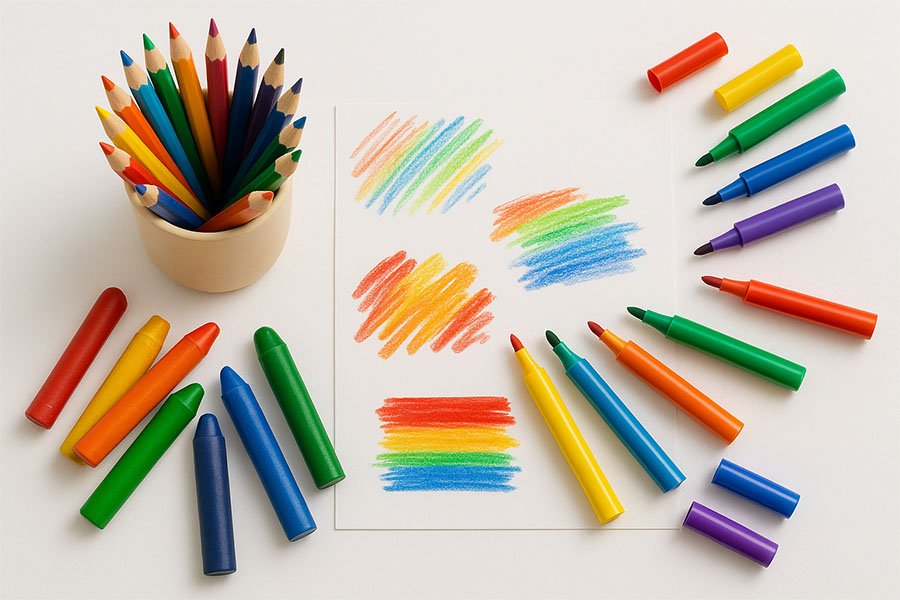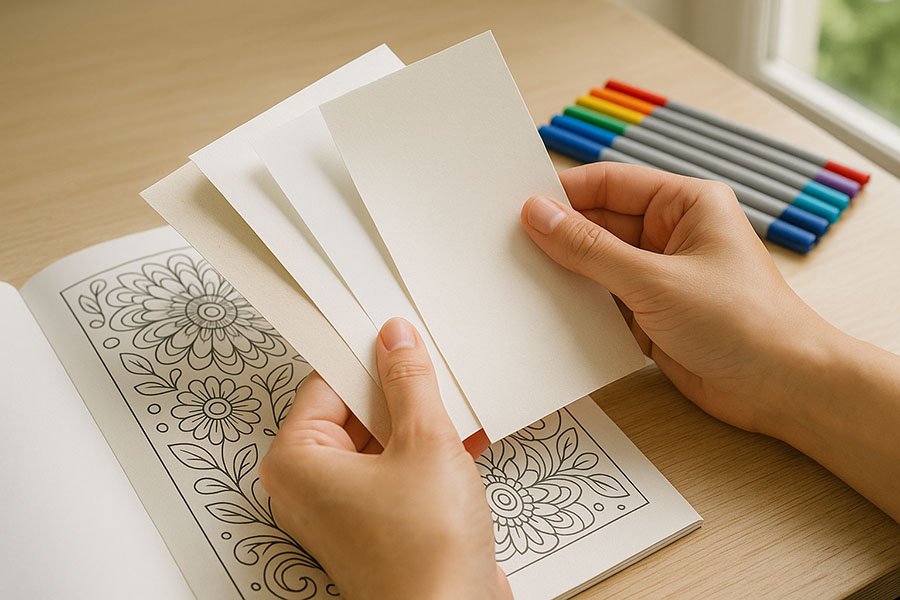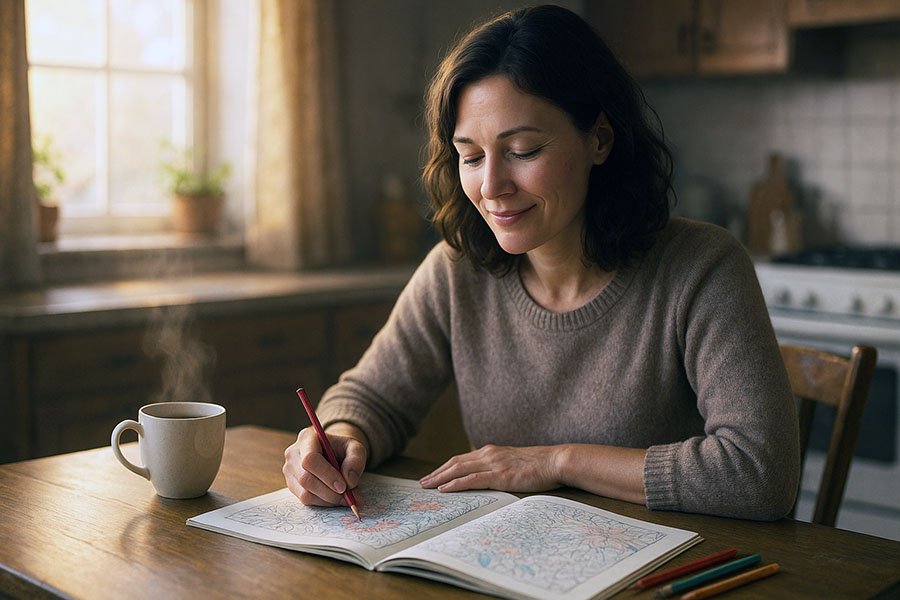If you’ve ever found yourself standing in the art supply aisle, staring at rows of markers, crayons, and colored pencils wondering which one to buy, you’re not alone. Whether you’re a parent shopping for your child, a hobbyist looking to unwind with adult coloring books, or a beginner dipping your toes into the world of coloring, choosing the right tool can feel surprisingly complicated.
Let’s break it down—no jargon, no fluff—just real talk about what each tool brings to the table, and how they fit different styles, needs, and moods.
Markers: Bold and Vibrant
What’s to Love:
Markers are like the extroverts of the coloring world. They’re loud, bold, and make an instant impact. If you love high-saturation color and smooth application, markers might be your go-to.
- Color payoff: Markers lay down color that pops. Great for making a statement.
- Smoothness: You don’t get that scratchy, uneven look you might with other tools.
- Speed: Want to fill large spaces fast? Markers are efficient and satisfying.
Markers are especially rewarding when used on high-quality, thick paper that can absorb the ink properly. Alcohol-based markers (like Copic or Prismacolor) offer professional-level color blending and layering, while water-based markers are more accessible and safer for kids.
The Downsides:
But with great power comes great responsibility.
- Bleeding: Especially on thin paper. You might end up coloring both sides without meaning to.
- Streaks: Some types leave marks if your strokes overlap.
- Less forgiving: Made a mistake? There’s no erasing with markers.
Some markers also dry out quickly if left uncapped, so they do require a bit of care. And let’s not forget—the good ones can be pricey.
Who They’re For:
Markers are fantastic for people who want to create vibrant, graphic-style art or anyone who colors for the boldness of it all. They’re a popular pick for adult coloring books with thick pages, kids who love vibrant tones, or designers creating quick mockups or illustrations.
Crayons: Classic and Kid-Friendly
What’s to Love:
Crayons are the OG coloring tool—sturdy, reliable, and nostalgic. There’s something timeless about cracking open a new box of crayons.
- Easy to use: No setup, no cleanup. Just grab and go.
- Safe for kids: Non-toxic and durable, they’re a parent’s best friend.
- Budget-friendly: You can get a decent set without breaking the bank.
Modern crayons come in more varieties than you might expect—metallic, glitter, neon, twistable, and even erasable versions are widely available. The variety adds excitement to an old-school favorite.
The Downsides:
Crayons aren’t always the most elegant tool.
- Texture: The waxy finish can feel uneven, especially on detailed work.
- Precision: They’re not ideal for tight spaces or fine lines.
- Build-up: Layering color can cause wax clumps or a muddy effect.
They also tend to break easily under pressure and may not work well on glossy or slick surfaces.
Who They’re For:
Crayons shine in creative chaos—perfect for toddlers, young kids, or loose, expressive coloring. But with premium crayons or artist-grade options, even grown-ups can get in on the fun. They’re excellent for classrooms, quick sketches, and spontaneous creativity.
Colored Pencils: Detailed and Versatile
What’s to Love:
Colored pencils are like the introverts of the group—quietly brilliant and surprisingly complex.
- Control: You can go light or layer heavily, all in the same stroke.
- Blendability: With practice (or blending tools), you can create gradients and subtle color shifts.
- Precision: Perfect for intricate designs, adult coloring books, and fine detail.
They’re available in both wax-based and oil-based cores, with oil-based pencils offering less smudging and a smoother finish. Some pencils are even watercolor pencils—you can draw and then add water for a painted effect.
The Downsides:
They’re not without their quirks.
- Time-consuming: Building up color takes patience.
- Pressure sensitivity: Press too hard and the tip breaks. Too light and the color’s faint.
- Maintenance: You’ll need a good sharpener—and use it often.
Also, blending takes time to master. It’s not always instant gratification, but the results are worth it.
Who They’re For:
Ideal for teens, adults, and anyone who likes to slow down and really get into the zone while coloring. They offer a balance of flexibility and sophistication that appeals to both hobbyists and aspiring artists. Perfect for people who enjoy creating gradients, shadows, and realistic textures.
So…Which One is Best?
Here’s the truth: there’s no universal winner. It’s all about what you need in the moment.
- For bold, fast color? Go with markers.
- For simple, fun coloring sessions? Crayons have your back.
- For detailed, meditative art? Colored pencils are hard to beat.
And honestly, mixing tools is part of the fun. Use markers for outlines, crayons for background texture, and pencils for detail—it’s your art, your rules. Many artists and colorists build their own combo kits based on personal preferences and projects.
If you’re just starting out, try all three. See what feels best in your hand, what excites you to keep going, and what kind of results you enjoy most. Coloring should be fun, relaxing, and expressive—not another decision that stresses you out.
Whatever you choose, the best tool is the one that keeps you coming back to the page. So don’t overthink it. Pick up what feels right, and start coloring. You might be surprised where those colors take you.






0 Comments